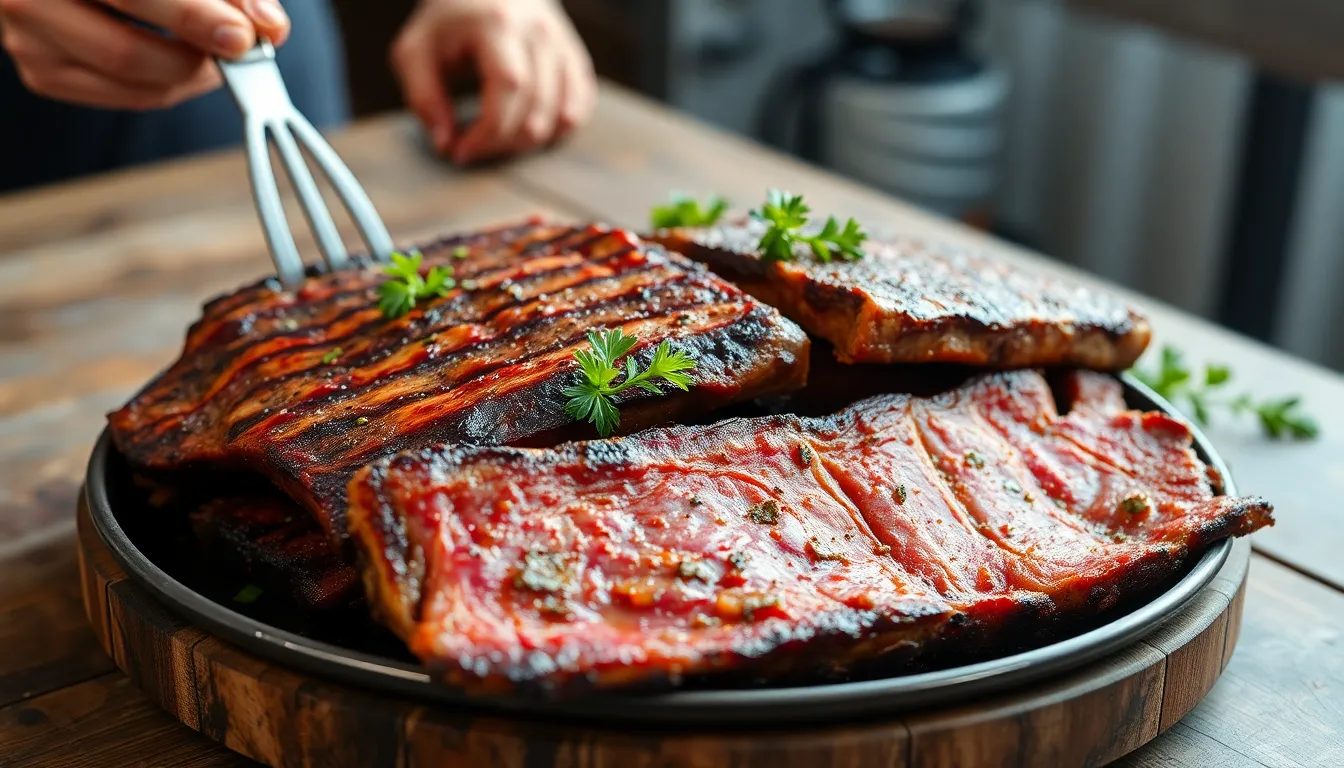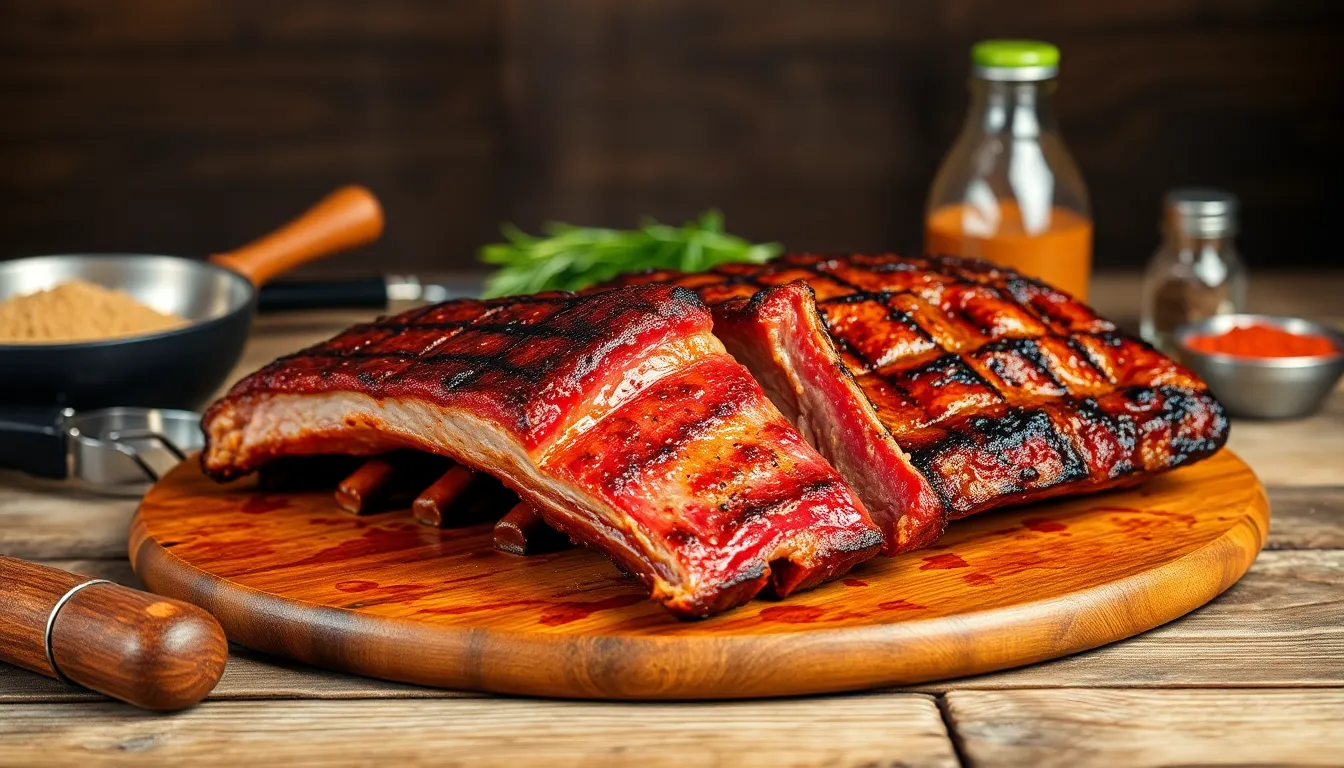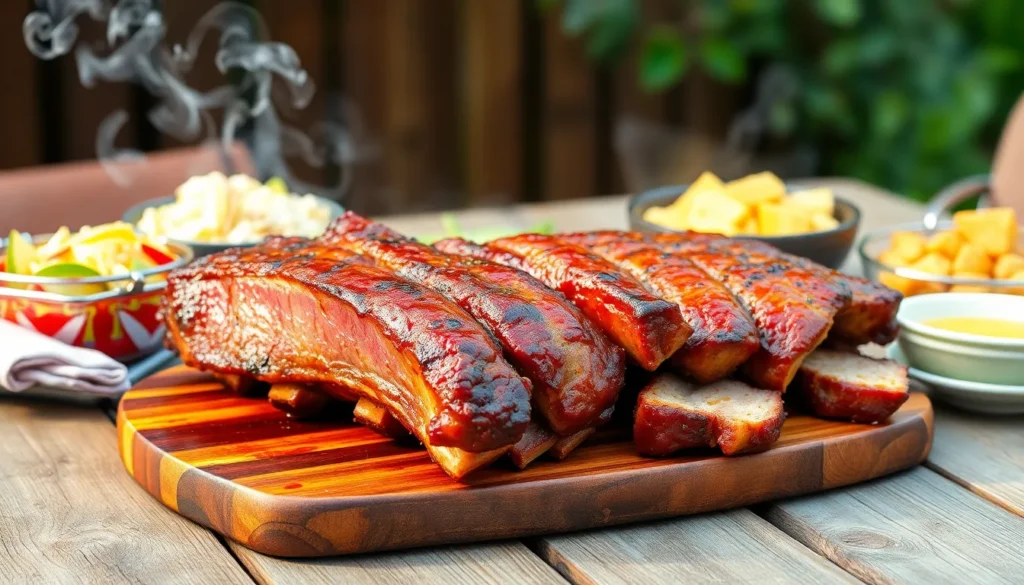Table of Contents
ToggleWhen it comes to short ribs, the debate can get meatier than a barbecue pit on a summer day. Is it beef or pork that takes the crown? For food lovers everywhere, this question is as tantalizing as the smell of ribs sizzling on the grill. Short ribs have a reputation for being the ultimate comfort food, but the confusion surrounding their origin can leave even the most seasoned foodies scratching their heads.
Understanding Short Ribs
Short ribs come from the beef or pork rib section, making them a popular choice in various cuisines. Different preparations enhance their rich flavor and tender texture.
Definition of Short Ribs
Short ribs consist of a small amount of meat attached to the rib bones, offering robust flavors. Cut from either the beef or pork rib area, they become tender when cooked slowly. Chefs and home cooks appreciate short ribs for their ability to absorb marinades and seasonings well.
Cuts and Types of Short Ribs
Cuts of short ribs vary based on the meat source. Beef short ribs include back ribs, which feature longer bones, and plate short ribs, which have meatier sections between the bones. Pork short ribs primarily consist of spare ribs and baby back ribs, each providing distinct textures and flavors suited for grilling or braising. Identifying the right type ensures successful cooking methods and better taste outcomes.
Is Short Rib Beef or Pork?


Short ribs contribute to the rich tapestry of barbecue culture. They can be derived from both beef and pork, showcasing distinct characteristics.
Characteristics of Beef Short Ribs
Beef short ribs produce a robust flavor and tender texture, ideal for slow-cooking methods. Portions of meat from the back ribs or plate provide a rich marbling, enhancing moisture retention during cooking. Cuts often weigh between 2-4 pounds, making them suitable for braising or smoking. Beef short ribs benefit from an extended cook time, ensuring they become melt-in-your-mouth tender. Seasoning complements the meat’s natural richness, while marinades penetrate deeply, resulting in a flavorful dish.
Characteristics of Pork Short Ribs
Pork short ribs deliver a milder taste compared to beef. They typically include spare ribs and baby back ribs, each offering a slightly different mouthfeel. Spare ribs provide more meat and fat, leading to a juicy eating experience. Baby back ribs are smaller and leaner, creating a leaner texture. Cooking techniques such as roasting or grilling suit pork short ribs well, producing a crispy exterior. Marinades enhance their flavor profile, and spices can elevate their sweetness, making them a favorite at barbecues.
Cooking Methods for Short Ribs
Short ribs lend themselves well to various cooking methods, allowing cooks to elevate their flavors and textures. The two popular techniques are grilling and braising.
Grilling Short Ribs
Grilling short ribs brings out a smoky flavor that enhances their natural richness. Heat the grill to medium-high, and place the ribs directly over the flames. Cook for approximately 3-4 minutes on each side, aiming for a nice sear. For added flavor, marinate the ribs beforehand with a mixture of soy sauce, garlic, and brown sugar. This creates a beautiful caramelized crust while keeping the meat tender and juicy. Monitor the internal temperature, which should reach 145°F for safety. Serve the ribs alongside grilled vegetables for a complete meal.
Braising Short Ribs
Braising short ribs involves slow cooking them in liquid for several hours, resulting in incredibly tender meat. Begin by searing the ribs in a heavy pot to develop a rich brown crust. Once seared, add aromatics like onions, carrots, and garlic, followed by a braising liquid such as beef broth or red wine. Cover and simmer on low heat for 2-3 hours, allowing the flavors to meld together. The ribs benefit from becoming fork-tender during this process. Using this method yields a rich sauce that pairs perfectly with mashed potatoes or polenta, making it a hearty dish.
Flavor Profiles of Beef and Pork Short Ribs
The flavor profiles of beef and pork short ribs vary significantly, offering distinct culinary experiences.
Taste Differences Between Beef and Pork
Beef short ribs deliver a bold richness that comes from higher fat content and intense marbling. This combination results in deep umami flavors, especially when cooked slowly. Pork short ribs, conversely, tend to have a sweeter, milder taste that highlights the natural pork flavors. Often, they are less fatty than beef, leading to a tender yet subtly flavored outcome. Grilling beef enhances its robust characteristics, while braising pork allows its natural sweetness to shine. Chefs may choose the type of short rib based on the desired flavor intensity for specific dishes.
Ideal Pairings for Each Type
Beef short ribs pair excellently with full-bodied red wines such as Cabernet Sauvignon. Their richness complements bold flavors found in sides like roasted vegetables or creamy polenta. For pork short ribs, light red wines like Pinot Noir or even sweet sauces work well. They match nicely with sides like apple slaw or cornbread, emphasizing pork’s sweetness. Adding fresh herbs and citrus elements in dressings can elevate pork’s milder taste. Each type of short rib benefits from thoughtful pairings that enhance its unique flavor profile.




